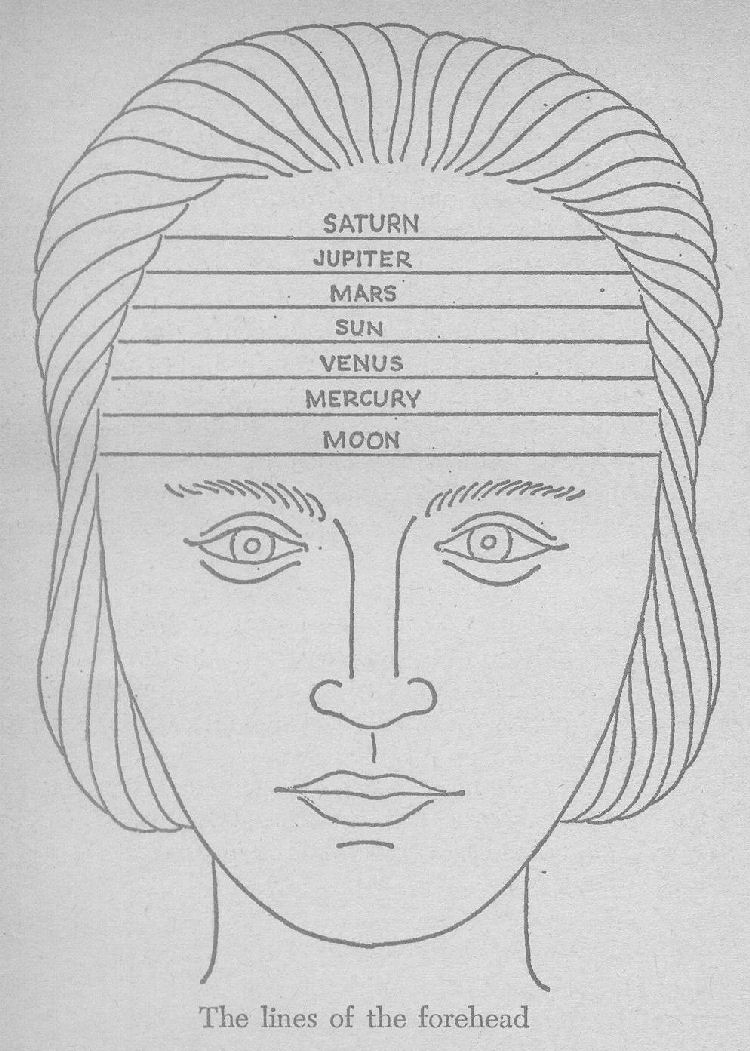Monthly Archives: March 2019
12.1.7.6. THE LINES OF THE FOREHEAD – METOPOSCOPY
12.1.7.6. THE LINES OF THE FOREHEAD
***********************************
METOPOSCOPY
************
This phase of physiognomy was developed by Jerome Cardan during the 1500’s. He interpreted the horizontal lines of the forehead in astrological terms, naming them from the top downward, in the planetary order of Saturn, Jupiter, Mars, the Sun, Venus, Mercury, and the Moon.
A firm, straight cross line at any of those positions indicates a person with the finer attributes of that particular planet. Broken lines show uncertainty, while those that are widely separated signify a complete lack of planetary attributes.
12.1.7.5. SIDE HEAD VIEWS
12.1.7.5. SIDE HEAD VIEWS
*************************
Viewed from the side, the head may show unusual height, or lowness, in contrast to its length or shortness from the nose to the back of the head. Ears also enter into such observations, but since their placement is governed largely by the shape of the head, they will be considered only in terms of their own shape and size.
A LARGE HEAD
************
is one that is both high and long in proportion to the average for a person of a given stature. It shows vision and ambition, usually of a high nature. Frontal development shows a desire for personal achievement; development at the back of the head tends more toward tradition or devotion to a cause.
A SMALL HEAD
************
both low and short proportionately, denotes the person who lives chiefly for today and wants quick results rather than long-range returns.
From these contrasts, it is easy to define the components: A high head shows aspiration and formalities; a low head, a person who deals only in tangibles. A long head reveals foresight with retentive ability needed in long-range planning. A short head makes the most out of every opportunity and prefers new things which can be discarded once they have served their purpose.






